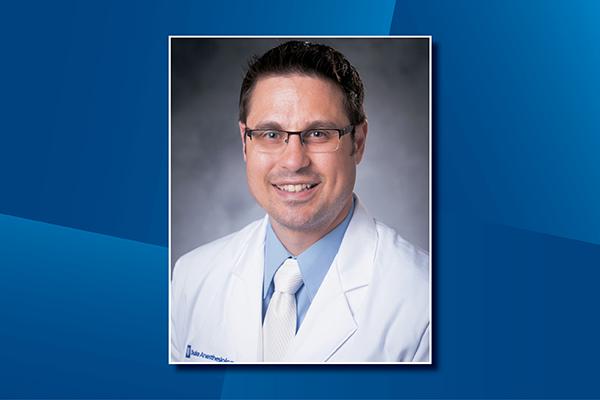
The National Institutes of Health’s National Institute of Diabetes and Digestive and Kidney Diseases has awarded Duke Anesthesiology’s Jamie Privratsky, MD, PhD, a five-year, $1,610,000 R01 grant for his project titled, “Novel Mitochondrial Protective Properties of Annexin A1.”
Acute kidney injury (AKI) is one of the most common forms of perioperative organ injury occurring in up to 30 percent of post-surgical patients, and it significantly increases morbidity and mortality. A number of vascular and transplant surgeries require interruption of blood flow to the kidney, rendering the kidney ischemic and causing significant metabolic stress. The timing of this kidney insult is known; thus, the possibility exists to intervene to protect the kidney. However, no treatment options exist to prevent or treat post-surgical AKI.
Privratsky’s research seeks to understand the cellular mechanism of a novel kidney protective therapeutic that could be given prior to surgery or kidney transplantation to protect the kidney from injury. The development of kidney protective therapeutics has the potential to greatly improve outcomes in the millions of people who undergo surgical operations and kidney transplants each year.
Privratsky and his co-investigators have characterized a novel peptide mimetic of the endogenous pro-resolving molecule annexin A1 that in their recently published data shows that it can ameliorate ischemic kidney injury in mice by augmenting mitochondrial function and limiting kidney tubular cell death. Despite the promise of their therapeutic to limit kidney injury, the novel mechanism by which it protects the kidney is not known. Thus, the objectives of his proposal are to determine the cellular receptor and signaling mechanism through which their therapeutic augments mitochondrial function and metabolism to limit AKI.
“Upon the completion of the study, we will be primed to pursue translational studies and further drug development,” says Privratsky, assistant professor of anesthesiology. “The development of our new therapeutic would not only help limit postoperative and transplant AKI but also have broad implications for protection of other organs following surgery and transplantation.”